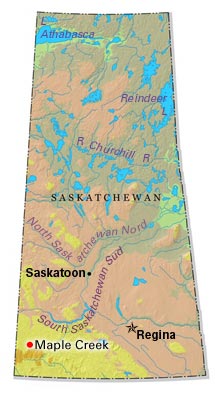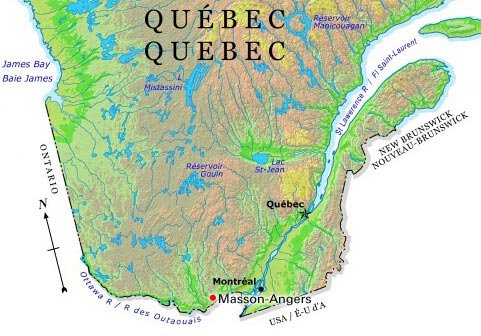Browse "Places"
-
Article
Mansel Island
Mansel Island, 112 km long by 48 km wide, is the smallest of 3 islands lying across the entrance to HUDSON BAY. Its topography features a gently undulating limestone lowland with elevations not exceeding 100 m.
"https://development.thecanadianencyclopedia.ca/images/tce_placeholder.jpg?v=e9dca980c9bdb3aa11e832e7ea94f5d9" // resources/views/front/categories/view.blade.php
https://development.thecanadianencyclopedia.ca/images/tce_placeholder.jpg?v=e9dca980c9bdb3aa11e832e7ea94f5d9
-
"https://d2ttikhf7xbzbs.cloudfront.net/media/media/2d7c0cab-1898-47f5-94ff-721ef9abf7a6.jpg" // resources/views/front/categories/view.blade.php
https://d2ttikhf7xbzbs.cloudfront.net/media/media/2d7c0cab-1898-47f5-94ff-721ef9abf7a6.jpg
-
Article
Music at Maple Leaf Gardens
Maple Leaf Gardens. Downtown Toronto arena, home of the famed Maple Leaf hockey team and venue for other sports and entertainment activities. Designed by Ross & Macdonald with associates Jack Ryrie and Mackenzie Waters, it was built in 1931 at a cost of about $1.5 million on the northwest corner of Carlton and Church streets.
"https://d2ttikhf7xbzbs.cloudfront.net/media/media/49ad081c-8dc7-4f26-b772-628408048e22.jpg" // resources/views/front/categories/view.blade.php
https://d2ttikhf7xbzbs.cloudfront.net/media/media/49ad081c-8dc7-4f26-b772-628408048e22.jpg
-
Article
Maple Ridge
Maple Ridge, BC, incorporated as a district municipality in 1874, population 76 052 (2011c), 68 949 (2006c). The District of Maple Ridge is located 40 km east of VANCOUVER, bounded by the FRASER RIVER on the south and on the north by the Golden Ears Mountain.
"https://development.thecanadianencyclopedia.ca/images/tce_placeholder.jpg?v=e9dca980c9bdb3aa11e832e7ea94f5d9" // resources/views/front/categories/view.blade.php
https://development.thecanadianencyclopedia.ca/images/tce_placeholder.jpg?v=e9dca980c9bdb3aa11e832e7ea94f5d9
-
Article
Margaree River
The Margaree-Lake Ainslie system is the largest river system on Cape Breton Island, and one of the largest in Nova Scotia, with a total length of 120 km and a watershed of 1165 km2.
"https://development.thecanadianencyclopedia.ca/images/tce_placeholder.jpg?v=e9dca980c9bdb3aa11e832e7ea94f5d9" // resources/views/front/categories/view.blade.php
https://development.thecanadianencyclopedia.ca/images/tce_placeholder.jpg?v=e9dca980c9bdb3aa11e832e7ea94f5d9
-
Article
Maritime Provinces
The word Maritimes is a regional designation for the Canadian provinces of Prince Edward Island, Nova Scotia and New Brunswick. These provinces constitute a cluster of peninsulas and islands that form the northeastern extension of the Appalachian Highlands and are also significantly affected by the Atlantic Ocean. Together, the Maritime provinces cover 133,850 km2 — or just a little more than 1 per cent of Canada's land surface.
"https://d2ttikhf7xbzbs.cloudfront.net/media/media/276c48ba-ecfb-4c4a-aec6-e7bba279abf9.jpg" // resources/views/front/categories/view.blade.php
https://d2ttikhf7xbzbs.cloudfront.net/media/media/276c48ba-ecfb-4c4a-aec6-e7bba279abf9.jpg
-
Article
Markham
Markham, Ontario, incorporated as a city in 1971, population 338,503 (2021 census), 328,966 (2016 census). Markham is located immediately northeast of Toronto. It is one of nine municipalities that make up the Regional Municipality of York. The Rouge River cuts through the municipality diagonally, connecting to Rouge National Urban Park. Initially an agricultural community, Markham is now known for its technology businesses and ethnocultural diversity. Throughout history, the Markham area has been home to different Indigenous groups, namely the Huron Wendat, Haudenosaunee and Anishinaabeg. The land is covered by Treaty 13 and the Williams Treaties.
"https://d2ttikhf7xbzbs.cloudfront.net/media/new_article_images/Markham/PacificMall.jpg" // resources/views/front/categories/view.blade.php
https://d2ttikhf7xbzbs.cloudfront.net/media/new_article_images/Markham/PacificMall.jpg
-
Article
Marshall
Marshall, Sask, incorporated as a village in 1914 and as a town in 2006, population 533 (2011c), 608 (2006c). The Town of Marshall is located on the Canadian National Railway line and the Yellowhead Highway between LLOYDMINSTER and NORTH BATTLEFORD, in the Rural Municipality of WILTON.
"https://development.thecanadianencyclopedia.ca/images/tce_placeholder.jpg?v=e9dca980c9bdb3aa11e832e7ea94f5d9" // resources/views/front/categories/view.blade.php
https://development.thecanadianencyclopedia.ca/images/tce_placeholder.jpg?v=e9dca980c9bdb3aa11e832e7ea94f5d9
-
Article
Martello Tower
The 16 squat, flat-roofed towers built in British North America from 1796 to 1848 were distributed as follows: Halifax (5), Saint John (1), Québec City (4) and Kingston (6). The towers were built during times of tension with the United States.
"https://development.thecanadianencyclopedia.ca/images/tce_placeholder.jpg?v=e9dca980c9bdb3aa11e832e7ea94f5d9" // resources/views/front/categories/view.blade.php
https://development.thecanadianencyclopedia.ca/images/tce_placeholder.jpg?v=e9dca980c9bdb3aa11e832e7ea94f5d9
-
Article
Martensville
Martensville, Sask, incorporated as a town in 1969 and a city in 2009, population 7716 (2011c), 4978 (2006c). The City of Martensville is located 9 km north of SASKATOON. In the late 1960s as Saskatoon's population underwent
"https://development.thecanadianencyclopedia.ca/images/tce_placeholder.jpg?v=e9dca980c9bdb3aa11e832e7ea94f5d9" // resources/views/front/categories/view.blade.php
https://development.thecanadianencyclopedia.ca/images/tce_placeholder.jpg?v=e9dca980c9bdb3aa11e832e7ea94f5d9
-
Article
Marystown
Marystown, NL, incorporated as a town in 1951, population 5506 (2011c), 5436 (2006c). The Town of Marystown is a shipbuilding and fish-processing centre, comprising the settlements of Marystown (formerly Mortier Bay), Creston, Creston North, Little Bay and Mooring Cove on the east side of the Burin Peninsula.
"https://development.thecanadianencyclopedia.ca/images/tce_placeholder.jpg?v=e9dca980c9bdb3aa11e832e7ea94f5d9" // resources/views/front/categories/view.blade.php
https://development.thecanadianencyclopedia.ca/images/tce_placeholder.jpg?v=e9dca980c9bdb3aa11e832e7ea94f5d9
-
Article
Mascouche
The history of Mascouche was closely linked to the roles played by Gabriel Christie and Peter and his son John Pangman, 3 of the last owners of the Seigneury de La Chesnaye.
"https://development.thecanadianencyclopedia.ca/images/tce_placeholder.jpg?v=e9dca980c9bdb3aa11e832e7ea94f5d9" // resources/views/front/categories/view.blade.php
https://development.thecanadianencyclopedia.ca/images/tce_placeholder.jpg?v=e9dca980c9bdb3aa11e832e7ea94f5d9
-
Article
Masset
Masset, BC, incorporated as a village in 1961, population 884 (2011c), 940 (2006c). The Village of Masset is located on the northern tip of Graham Island, the largest of HAIDA GWAII off the northern coast of British Columbia.
"https://development.thecanadianencyclopedia.ca/images/tce_placeholder.jpg?v=e9dca980c9bdb3aa11e832e7ea94f5d9" // resources/views/front/categories/view.blade.php
https://development.thecanadianencyclopedia.ca/images/tce_placeholder.jpg?v=e9dca980c9bdb3aa11e832e7ea94f5d9
-
Article
Massey Hall
Known as “Canada’s Carnegie Hall,” Massey Hall is Canada’s oldest and most venerated concert hall. It opened in 1894 and was the home of the Toronto Symphony Orchestra and the Toronto Mendelssohn Choir until 1982. The site of many historic events and performances, it has been repeatedly voted Canada’s best live music venue over 1,500 seats and venue of the year by Canadian music industry associations. It is a National Historic Site and a heritage site in the City of Toronto. It was closed between 2 July 2018 and 24 November 2021 to allow for a $184-million renovation.
"https://d2ttikhf7xbzbs.cloudfront.net/media/media/ecd2d12a-f99b-4129-b278-e7cd6edb3318.jpg" // resources/views/front/categories/view.blade.php
https://d2ttikhf7xbzbs.cloudfront.net/media/media/ecd2d12a-f99b-4129-b278-e7cd6edb3318.jpg
-
Article
Masson-Angers
Masson-Angers is both industrial and residential in character. The main employer is the James MacLaren Industries pulp and paper mill, dating back to 1932. Hundreds of residents also work as civil servants for the federal government, commuting daily to and from the Ottawa-Hull area.
"https://d2ttikhf7xbzbs.cloudfront.net/media/media/4bf886be-b0b6-46fe-a3c4-8821edf34d6c.jpg" // resources/views/front/categories/view.blade.php
https://d2ttikhf7xbzbs.cloudfront.net/media/media/4bf886be-b0b6-46fe-a3c4-8821edf34d6c.jpg
